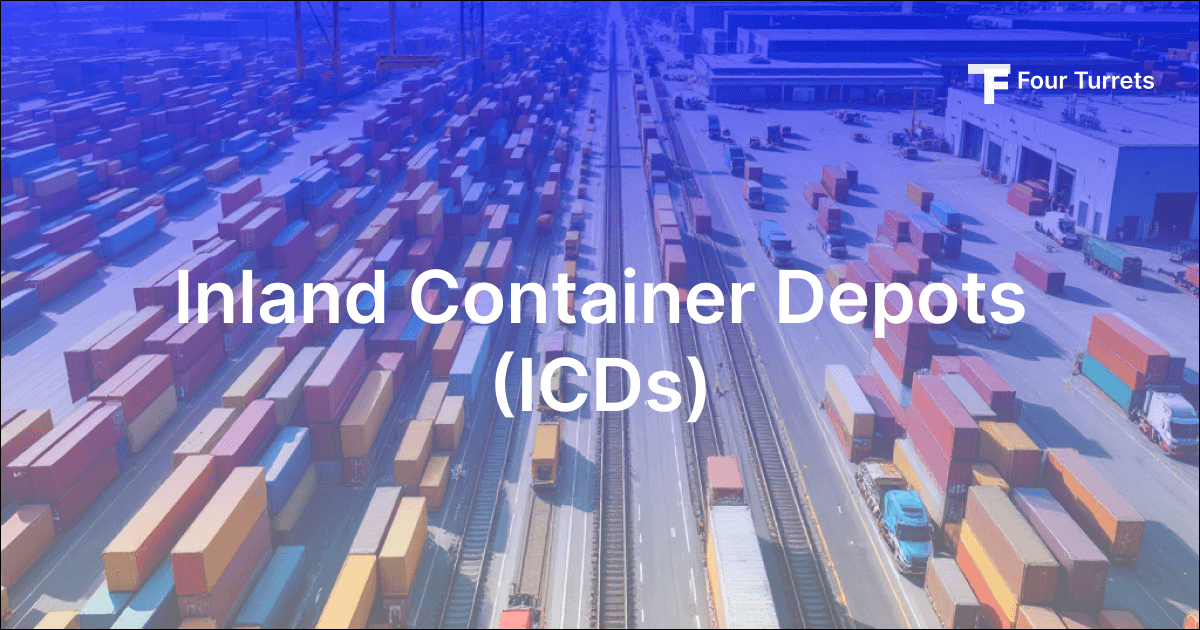Demystifying Inland Container Depots (ICDs): Your Guide to Efficient Logistics Hubs
Smooth movement of goods is heavily dependent on how smoothly containers can flow within the global supply chain system. Central to this intricate dance of import and export are facilities designed to streamline the process away from busy seaports. Enter the Inland Container Depot (ICD). But what exactly are they, and how do they differ from similar facilities like Container Freight Stations (CFSs)?
If you’re involved in logistics or international shipping, understanding ICDs is crucial. These hubs play a vital role in managing container storage and facilitating the flow of goods across land. Let’s dive in.
What is an Inland Container Depot (ICD) Facility?
An Inland Container Depot, often abbreviated as ICD, is essentially a facility located in the hinterland, away from coastal ports. Think of it as a dry port. It acts as a crucial hub for handling, storing, and clearing shipping containers before they reach their final destination or begin their journey overseas. Network of ICDs serve as temporary storage facilities for export and import-related goods.
They are designed to alleviate congestion at major seaports by providing essential services inland. These facilities function as critical nodes in the logistics chain, offering various services to streamline the movement of cargo containers and facilitate international trade.
Key Functions of Inland Container Depots (ICDs)
ICDs offer more than just container storage. Their functions are diverse and essential for an efficient supply chain:
- Temporary Storage: ICDs provide secure temporary warehousing for both loaded and empty containers. This helps manage inventory and reduces pressure on mother port facilities.
- Customs Clearance: Many ICDs have customs facilities, allowing import and export cargo to be cleared away from the congested port area. This speeds up the process significantly.
- Container Handling & Repair: ICDs are equipped to handle container loading/unloading and often offer maintenance and repair services.
- Intermodal Connectivity: They serve as vital links for intermodal transportation, connecting sea routes with road and rail networks. This facilitates the seamless transfer of containers between different modes of transport.
- Consolidation and Deconsolidation: ICDs can act as hubs for consolidating smaller shipments (LCL – Less than Container Load) into full containers (FCL – Full Container Load) for export, or deconsolidating imported FCL shipments into smaller consignments for final delivery.
- Issuing Transport Documents: ICDs can handle the necessary documentation related to cargo movement.
Difference Between Container Freight Station and Inland Container Depot
While often mentioned together, ICDs and Container Freight Stations (CFSs) serve distinct, though sometimes overlapping, roles. Here’s the key difference between them:
Inland Container Depot (ICD):
- Located inland (hinterland), away from the port.
- Acts as a dry port, often with full customs clearance facilities.
- Handles both FCL and LCL cargo.
- Focuses on container storage, handling, and serving as an intermodal hub.
Container Freight Station (CFS):
- Typically located closer to or within the port area.
- Primarily focuses on consolidating LCL export cargo and deconsolidating LCL import cargo.
- Acts as an extension of the port, mainly dealing with LCL shipments before they are loaded onto a vessel or after they are discharged.
- May offer temporary storage but usually for shorter durations than ICDs.
Essentially, an ICD is a more comprehensive inland hub, while a CFS is more of a port-proximate station focused on LCL cargo aggregation and segregation.
What is an ICD Dry Port?
The term “ICD dry port” emphasizes the function of an Inland Container Depot as a port facility located inland. It performs many functions typically associated with a seaport – like customs clearance from customs department, container storage, and intermodal connections – but without being situated on the coast. This “dry port” concept is fundamental to reducing congestion at maritime terminals and extending port functions closer to major industrial and consumption centres.
Advantage of Inland Container Depots
Utilizing ICDs offers several advantages for businesses involved in import and export:
- Reduced Port Congestion: Shifts container handling and customs processes away from busy seaports.
- Lower Costs: Can lead to reduced demurrage and detention charges due to efficient handling and storage.
- Inland transport connections via rail can also be more cost-effective for long distances.
- Increased Efficiency: Streamlines the logistics chain by providing a single point for storage, clearance, and onward transportation.
- Improved Accessibility: Brings port-like facilities closer to inland shippers and consignees.
- Enhanced Supply Chain Management: Offers better control and visibility over cargo movement.
Conclusion
Inland Container Depots (ICDs) are indispensable components of modern global logistics. By acting as dry ports in the hinterland, they provide essential services like container storage, customs clearance, and intermodal connectivity, thereby decongesting seaports and streamlining the import and export process. Understanding the role and function of ICDs, and how they differ from CFSs, empowers businesses to optimize their supply chains, reduce costs, and ensure the efficient movement of cargo.
Whether you are importing goods or exporting products, leveraging the capabilities of an Inland Container Depot can significantly enhance your logistical operations.



